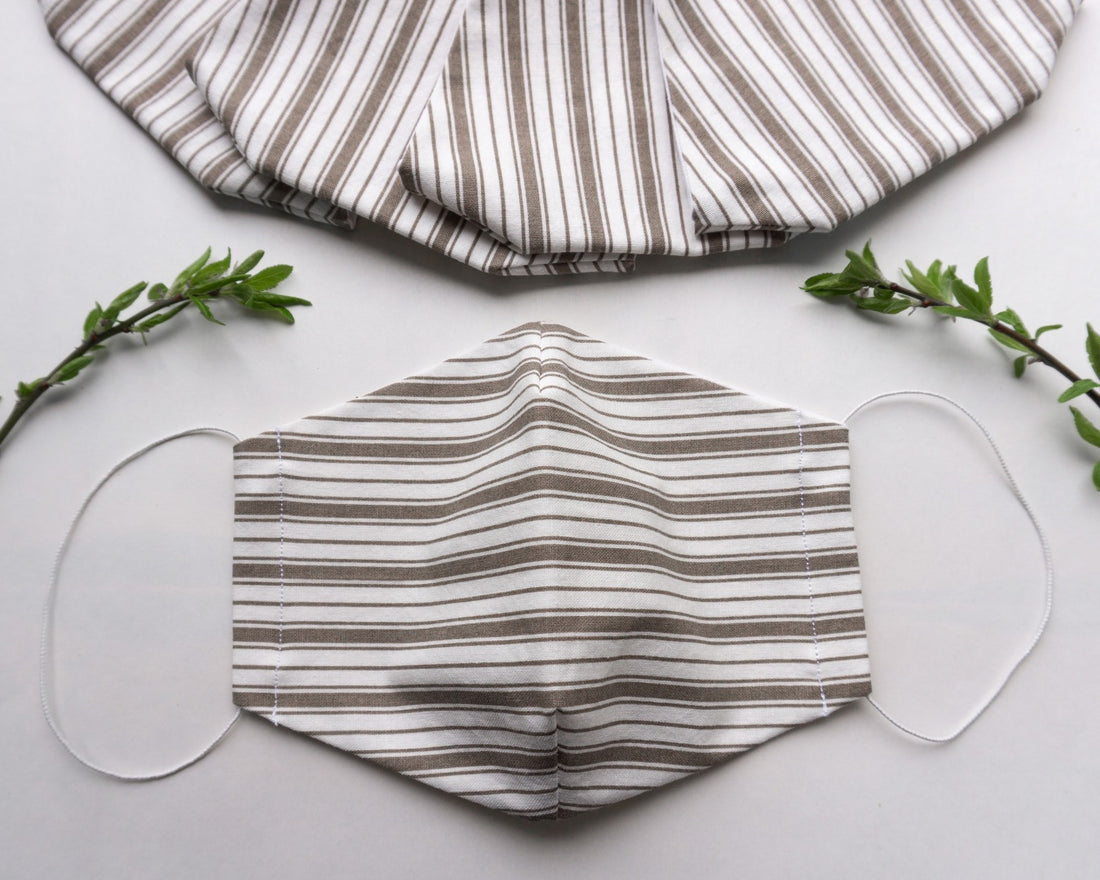So, you have a face mask but are you caring for it properly? While many of us pop the face covering on when we head into public space it may not occur to us to clean them when we remove them for the day once we’re home. Exactly how often should you be washing your face mask for hygienic purposes and for keeping your complexion clear and healthy? We sort through some habits and best practices to incorporate into your daily routine to keep your face mask clean and your complexion clear.
Why wearing a face mask is important:
The latest guidance from the CDC advises wearing a cloth face covering in places where social distancing may be difficult (think the grocery store) to help reduce the spread of the novel coronavirus. The virus is spread primarily person to person via respiratory droplets in the air when an infected person coughs, sneezes or talks for example. "Face covering prevents both airborne transmission by blocking atomization and inhalation of virus-bearing aerosols and contact transmission by blocking viral shedding of droplets," according to researchers who conducted a study on airborne transmission of Covid-19. Because some people may be asymptomatic it is important to wear a mask to protect yourself and others. The best cloth face mask is one that is woven tightly, fits snugly around the face and is made of a natural breathable material. A mask that is too tight and made of synthetic materials may trap heat and can cause skin irritation.
Why you should clean your face mask:
Reusable face masks should be washed after each use per CDC guidelines. It is possible that the mask can become contaminated with the virus as we touch it to remove it (you should always be mindful to wash or sanitize your hands before and after removing your mask). Running an entire machine full of water is not the most practical for a few masks, so if you aren’t doing laundry alternatively your mask can be hand washed or placed in a dry place (like a paper bag) for 72 hours before wearing again. For sensitive skin use a fragrance free or mild detergent.
Face mask, skin irritation and how to treat it:
Depending on the material your mask is made of it can retain heat and moisture causing skin irritation. “The occlusive nature of a protective mask means that it creates a warm, moist environment for your skin as your exhaled breath is trapped. This can lead to a buildup of sweat and oil under the mask, which can cause inflammation, irritation and acne breakouts,” explains Dr. Hadley King a New York dermatologist. We recommend cotton face mask to help reduce this but if your skin becomes red or inflamed a hydrocortisone cream may help. If you’re experiencing an acne breakout a topical benzoyl peroxide treatment can be used.
Protecting skin under a face mask:
Keeping your skin moisturized under your face mask to helps to for a barrier between your face and the mask. Look for moisturizers with ingredients like hyaluronic acid or ceramides. Also, skipping makeup can help reduce skin irritation and acne while wearing a mask but if you must make sure the formula you choose is non comedogenic to prevent clogged pores and blackheads. Try keeping your makeup look simple by focusing on your brows and eyes and don’t skip the sunscreen just because the mask is covering half of your face.
